 W
WShimshon Avraham Amitsur was an Israeli mathematician. He is best known for his work in ring theory, in particular PI rings, an area of abstract algebra.
 W
WIvar Otto Bendixson was a Swedish mathematician.
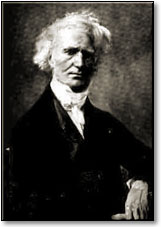 W
WJacques Philippe Marie Binet was a French mathematician, physicist and astronomer born in Rennes; he died in Paris, France, in 1856. He made significant contributions to number theory, and the mathematical foundations of matrix algebra which would later lead to important contributions by Cayley and others. In his memoir on the theory of the conjugate axis and of the moment of inertia of bodies he enumerated the principle now known as Binet's theorem. He is also recognized as the first to describe the rule for multiplying matrices in 1812, and Binet's Formula expressing Fibonacci numbers in closed form is named in his honour, although the same result was known to Abraham de Moivre a century earlier.
 W
WBaron Augustin-Louis Cauchy was a French mathematician, engineer, and physicist who made pioneering contributions to several branches of mathematics, including mathematical analysis and continuum mechanics. He was one of the first to state and rigorously prove theorems of calculus, rejecting the heuristic principle of the generality of algebra of earlier authors. He almost singlehandedly founded complex analysis and the study of permutation groups in abstract algebra.
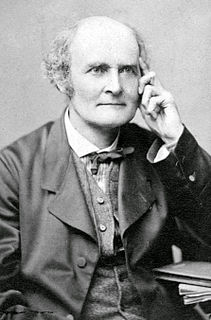 W
WArthur Cayley was a prolific British mathematician who worked mostly on algebra. He helped found the modern British school of pure mathematics.
 W
WGabriel Cramer was a Genevan mathematician. He was the son of physician Jean Cramer and Anne Mallet Cramer.
 W
WFerdinand Georg Frobenius was a German mathematician, best known for his contributions to the theory of elliptic functions, differential equations, number theory, and to group theory. He is known for the famous determinantal identities, known as Frobenius–Stickelberger formulae, governing elliptic functions, and for developing the theory of biquadratic forms. He was also the first to introduce the notion of rational approximations of functions, and gave the first full proof for the Cayley–Hamilton theorem. He also lent his name to certain differential-geometric objects in modern mathematical physics, known as Frobenius manifolds.
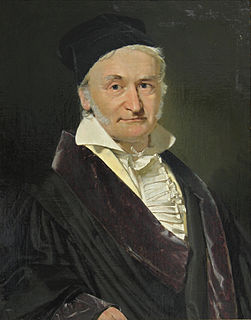 W
WJohann Carl Friedrich Gauss was a German mathematician and physicist who made significant contributions to many fields in mathematics and science. Sometimes referred to as the Princeps mathematicorum and "the greatest mathematician since antiquity", Gauss had an exceptional influence in many fields of mathematics and science, and is ranked among history's most influential mathematicians.
 W
WJames Freeman Gilbert was an American geophysicist, best known for his work with George E. Backus on inverting geophysical data, and also for his role in establishing an international network of long-period seismometers.
 W
WJørgen Pedersen Gram was a Danish actuary and mathematician who was born in Nustrup, Duchy of Schleswig, Denmark and died in Copenhagen, Denmark.
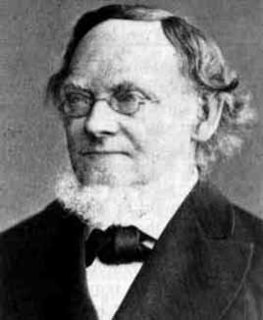 W
WHermann Günther Grassmann was a German polymath, known in his day as a linguist and now also as a mathematician. He was also a physicist, general scholar, and publisher. His mathematical work was little noted until he was in his sixties.
 W
WGeorg Karl Wilhelm Hamel was a German mathematician with interests in mechanics, the foundations of mathematics and function theory.
 W
WSir William Rowan Hamilton MRIA was an Irish mathematician, Andrews Professor of Astronomy at Trinity College Dublin, and Royal Astronomer of Ireland. He worked in both pure mathematics and mathematics for physics. He made important contributions to optics, classical mechanics and algebra. Although Hamilton was not a physicist–he regarded himself as a pure mathematician–his work was of major importance to physics, particularly his reformulation of Newtonian mechanics, now called Hamiltonian mechanics. This work has proven central to the modern study of classical field theories such as electromagnetism, and to the development of quantum mechanics. In pure mathematics, he is best known as the inventor of quaternions.
 W
WCharles Hermite FRS FRSE MIAS was a French mathematician who did research concerning number theory, quadratic forms, invariant theory, orthogonal polynomials, elliptic functions, and algebra.
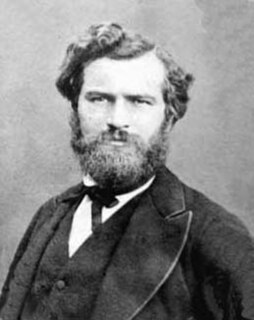 W
WMarie Ennemond Camille Jordan was a French mathematician, known both for his foundational work in group theory and for his influential Cours d'analyse.
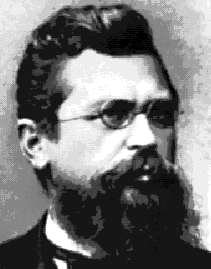 W
WWilhelm Jordan was a German geodesist who conducted surveys in Germany and Africa and founded the German geodesy journal.
 W
WPierre-Simon, marquis de Laplace was a French scholar and polymath whose work was important to the development of engineering, mathematics, statistics, physics, astronomy, and philosophy. He summarized and extended the work of his predecessors in his five-volume Mécanique Céleste (1799–1825). This work translated the geometric study of classical mechanics to one based on calculus, opening up a broader range of problems. In statistics, the Bayesian interpretation of probability was developed mainly by Laplace.
 W
WGottfried Wilhelm (von) Leibniz was a prominent German polymath and one of the most important logicians, mathematicians and natural philosophers of the Enlightenment. As a representative of the seventeenth-century tradition of rationalism, Leibniz developed, as his most prominent accomplishment, the ideas of differential and integral calculus, independently of Isaac Newton's contemporaneous developments. Mathematical works have consistently favored Leibniz's notation as the conventional expression of calculus. It was only in the 20th century that Leibniz's law of continuity and transcendental law of homogeneity found mathematical implementation. He became one of the most prolific inventors in the field of mechanical calculators. While working on adding automatic multiplication and division to Pascal's calculator, he was the first to describe a pinwheel calculator in 1685 and invented the Leibniz wheel, used in the arithmometer, the first mass-produced mechanical calculator. He also refined the binary number system, which is the foundation of nearly all digital computers, including the Von Neumann machine, which is the standard design paradigm, or "computer architecture", followed from the second half of the 20th century, and into the 21st.
 W
WSir Isaac Newton was an English mathematician, physicist, astronomer, theologian, and author who is widely recognised as one of the most influential scientists of all time and as a key figure in the scientific revolution. His book Philosophiæ Naturalis Principia Mathematica, first published in 1687, established classical mechanics. Newton also made seminal contributions to optics, and shares credit with Gottfried Wilhelm Leibniz for developing the infinitesimal calculus.
 W
WGiuseppe Peano was an Italian mathematician and glottologist. The author of over 200 books and papers, he was a founder of mathematical logic and set theory, to which he contributed much notation. The standard axiomatization of the natural numbers is named the Peano axioms in his honor. As part of this effort, he made key contributions to the modern rigorous and systematic treatment of the method of mathematical induction. He spent most of his career teaching mathematics at the University of Turin. He also wrote an international auxiliary language, Latino sine flexione, which is a simplified version of Classical Latin. Most of his books and papers are in Latin sine flexione, others are in Italian.
 W
WOskar Perron was a German mathematician.
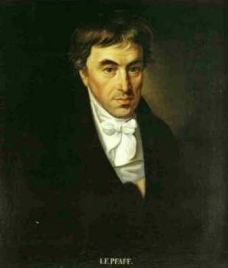 W
WJohann Friedrich Pfaff was a German mathematician. He was described as one of Germany's most eminent mathematicians during the 19th century. He was a precursor of the German school of mathematical thinking, which under Carl Friedrich Gauss and his followers largely determined the lines on which mathematics developed during the nineteenth century.
 W
WJohn William Strutt, 3rd Baron Rayleigh,, was a British scientist who made extensive contributions to both theoretical and experimental physics. He spent all of his academic career at the University of Cambridge. Among many honors, he received the 1904 Nobel Prize in Physics "for his investigations of the densities of the most important gases and for his discovery of argon in connection with these studies." He served as President of the Royal Society from 1905 to 1908 and as Chancellor of the University of Cambridge from 1908 to 1919.
 W
WErhard Schmidt was a Baltic German mathematician whose work significantly influenced the direction of mathematics in the twentieth century. Schmidt was born in Tartu, in the Governorate of Livonia.
 W
WIssai Schur was a Russian mathematician who worked in Germany for most of his life. He studied at the University of Berlin. He obtained his doctorate in 1901, became lecturer in 1903 and, after a stay at the University of Bonn, professor in 1919.
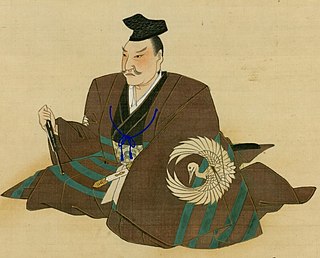 W
WSeki Takakazu , also known as Seki Kōwa , was a Japanese mathematician and author of the Edo period.
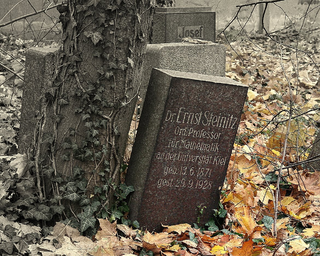 W
WErnst Steinitz was a German mathematician.
 W
WVolker Strassen is a German mathematician, a professor emeritus in the department of mathematics and statistics at the University of Konstanz.
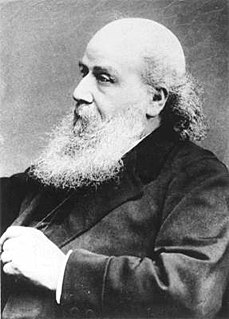 W
WJames Joseph Sylvester FRS HFRSE was an English mathematician. He made fundamental contributions to matrix theory, invariant theory, number theory, partition theory, and combinatorics. He played a leadership role in American mathematics in the later half of the 19th century as a professor at the Johns Hopkins University and as founder of the American Journal of Mathematics. At his death, he was a professor at Oxford.
 W
WHermann Klaus Hugo Weyl, was a German mathematician, theoretical physicist and philosopher. Although much of his working life was spent in Zürich, Switzerland, and then Princeton, New Jersey, he is associated with the University of Göttingen tradition of mathematics, represented by David Hilbert and Hermann Minkowski.
 W
WEduard Weyr was a Czech mathematician now chiefly remembered as the discoverer of a certain canonical form for square matrices over algebraically closed fields. Weyr presented this form briefly in a paper published in 1885. He followed it up with a more elaborate treatment in a paper published in 1890. This particular canonical form has been named as the Weyr canonical form in a paper by Shapiro published in The American Mathematical Monthly in 1999. Previously, this form has been variously called as modified Jordan form, reordered Jordan form, second Jordan form, and H-form.